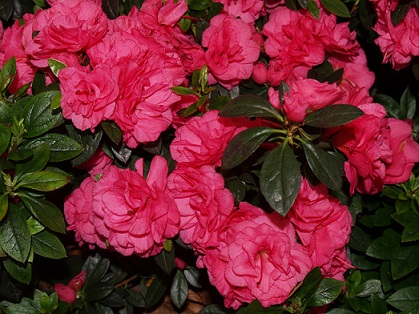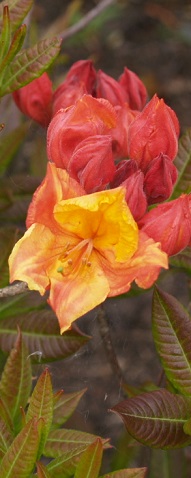Learn how to grow Azaleas and Rhododendrons to perfection!
Azaleas and rhododendrons are some of the most popular plants grown
anywhere. This course shows how to grow them to perfection, and builds
your knowledge of varieties available, to give you a long lasting
display of colour in the garden.
This is a valuable course for gardeners, nurserymen, botanists, plant breeders, garden designers or anyone passionate about azaleas and rhododendrons.

Lesson Content
There are eight lessons as outlined below, in this course, each
requiring about around 10 or more hours of work. Overall, the course can
be completed in around 100 hours.
- Introduction.
- Culture
- Propagation.
- The most Commonly Grown Varieties of Azaleas.
- Most Commonly Grown Varieties of Rhododendrons.
- Lesser Grown Varieties.
- Making the best use of these plants.
- Special Assignment. On one selected plant or group.
Duration 100 hours of self paced study
Course Aims
- Describe the classification of the genus Rhododendrons
- Describe common cultural needs relative to all Rhododendron species.
- Propagate and explain the materials and techniques used for propagation of Azaleas and Rhododendrons.
- Describe a range of commonly cultivated species of Rhododendrons and Azaleas.
- Undertake research into lesser known varieties of Rhododendron and Azalea.
- Determine how to use rhododendrons in a home garden or other landscape situation.
- Discuss in detail at least one specific group or individual plant in the Rhododendron genus.

How do Rhododendrons fit into the Broader Plant Kingdom?
Both rhododendrons and azaleas are in fact (botanically speaking), both members of the genus "Rhododendron". They share a family (ie. Ericaceae) with ericas and blueberries among many other common garden plants.
Most Ericaceae plants like acidic soils and high to medium levels of light (not heavy shade). Most also prefer a temperate climate, though some are indigenous to arctic climates and several others to tropical regions.
Many Ericaceae species live in close association with a group of mycorrhiza fungi in the soil. This group is known as ericoid mycorrhizas and is an unusual group. The fungi form a symbiotic relationship with the host plant Fungal hyphae (filaments) wrap around root hairs and penetrate the cell walls of cortical cells in which they form coils. They do not extend into the cell plasma though. The mycorrhizas provide soil nutrients to the plant’s roots in exchange for carbohydrates produced by the plant through photosynthesis. Some nurseries may inoculate their rhododendrons with mycorrhizal fungi to enhance nutrient uptake and growth.
Rhododendrons dominate a sub group of Ericaceae plants, differentiated by the winter buds of rhododendrons have scales, stamens usually have no appendages, the corolla detaches as the flower dies off (ie. is cauducous), fruits are a septicidal capsule and seeds are frequently but not always winged,
WHO IS THIS COURSE FOR?
- Anyone with a passion for rhododendrons
- Amateur gardeners with a passion, plant collectors and breeders
- Nurserymen, landscapers, garden managers
- Horticulturists, gardeners, garden lovers